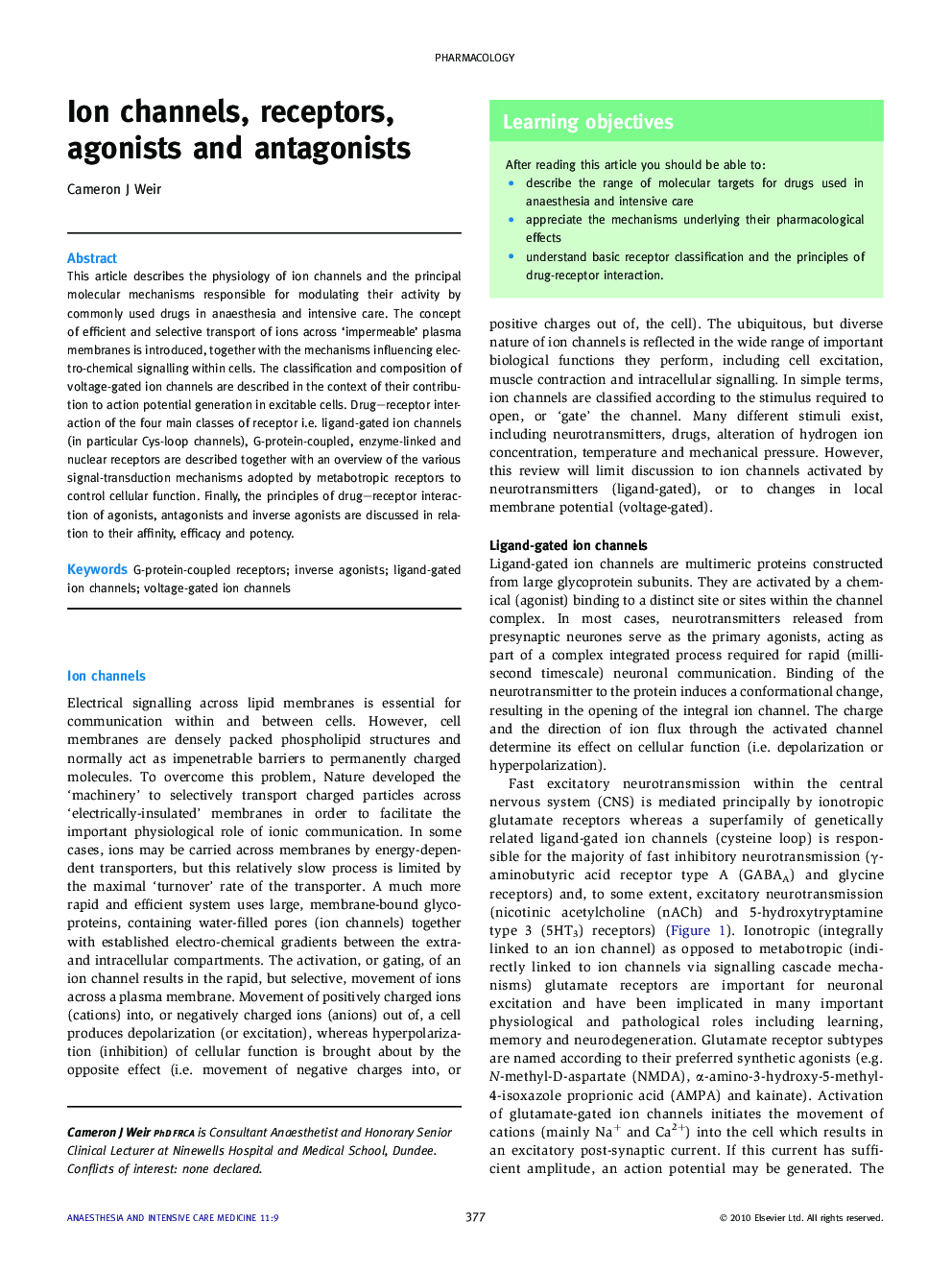| Article ID | Journal | Published Year | Pages | File Type |
|---|---|---|---|---|
| 2742879 | Anaesthesia & Intensive Care Medicine | 2010 | 7 Pages |
This article describes the physiology of ion channels and the principal molecular mechanisms responsible for modulating their activity by commonly used drugs in anaesthesia and intensive care. The concept of efficient and selective transport of ions across ‘impermeable’ plasma membranes is introduced, together with the mechanisms influencing electro-chemical signalling within cells. The classification and composition of voltage-gated ion channels are described in the context of their contribution to action potential generation in excitable cells. Drug–receptor interaction of the four main classes of receptor i.e. ligand-gated ion channels (in particular Cys-loop channels), G-protein-coupled, enzyme-linked and nuclear receptors are described together with an overview of the various signal-transduction mechanisms adopted by metabotropic receptors to control cellular function. Finally, the principles of drug–receptor interaction of agonists, antagonists and inverse agonists are discussed in relation to their affinity, efficacy and potency.
